- Home
- Herbie Brennan
Through the Wardrobe Page 11
Through the Wardrobe Read online
Page 11
It is only now, upon reflection on the history of women’s rights and literature of the times, that I realize how lucky I was that Lewis wrote girls who could inspire me so well. Although Lucy is a close second, Jill Pole remains my favorite action girl of Narnia. She isn’t as arrogant as Aravis, but she is as brave and strong. As a character in the later books, toward the end of the Narnian cycle, Jill can be seen as the perfection of the über-unprissy (and yet not masculine) girl character that Lewis began crafting with Lucy Pevensie. In the final book, The Last Battle, she states her mind, isn’t afraid to disobey the orders of a king to uncover the secret of the fake Aslan, and—unlike Susan Pevensie in The Lion, the Witch and the Wardrobe—she wields her bow and arrows proficiently to help save Narnia in a fierce and dangerous battle. To be fair, Susan does get to use her bow in a battle (of sorts) against the Dwarf Trumpkin in Prince Caspian . But Jill’s arrows fly true and strike down many enemies in the heat of battle when the fate of Narnia is at stake.
So how did the author behind the curtain of the Chronicles of Narnia come to know the minds and hearts of girls so well? After all, his mother died when he was ten, he had no sisters, and he was sent to a boarding school shortly after his mother died, where he spent a great deal of his time in the company of boys and men. Not to mention that he didn’t marry until late in life. And yet he (much better than Tolkien in his fantasy universe) understood the character of his Narnian girls and authentically drew their faults and their strengths. Where did he learn about the power of girls?
My guess is that he observed people—all kinds of people, from girls to women and boys to men. Finely drawn characters that ring true to life are usually the result of an author who observes the world and people around him keenly. And then, instead of bowing to literary convention that preferred female characters be portrayed as stereotypically good or evil, he put real girls on the page to delight young readers of both genders.
Having read a little of his many letters, which seem to be silent on this point, I am left to wonder whether he portrayed his females authentically because it did not occur to him to do otherwise (despite the fact that his contemporary and close friend Tolkien chose otherwise), or whether he was striking a blow for the rights that he had been watching women fight for and win all of his life. It was easy for me, as a child, to overlook the earth-shattering nature of the changes that occurred in society when women began to claim the right to full citizenship. (My study of history corrected that impression of “easy,” natural change when I learned that Abigail Adams had implored her husband to give women the vote back when he was working with others to craft the new country of the United States, over a century before women finally did get the vote.) Lewis, on the other hand, was a young man in Ireland when these important battles were raging in the newspaper and in each home. How much did this battle affect his characters? Comparing the history going on around him with the events in his novels, there are many easy connections to make.
Lewis served in World War I, and his battle scenes, as well as those scenes where wearily embattled characters seek shelter and make do with little food, reflect the realities of war. But war was for men at that time, so where might he have observed women on a battlefield or suffering the realities of too little food and inadequate shelter? History reveals that WWI and WWII were periods when professional nursing was finally blossoming into a career to be respected and revered, as these women worked to save wounded soldiers from dying of infection and fever. Nurses, almost exclusively female, were at the front lines, hardy and brave. Lucy, with her healing potion, and Susan, with her motherly caution, can be seen as reflections of those strong, brave women.
Lewis grew up in an era when women were fighting for, and finally winning, the right to vote in England and America. No observant, thinking man of his era could sit back and conceive of women as soft, brainless creatures. And yet the literature of the time often hesitated to portray even the “good” female characters as anything but angels—or future angels—of the house, a Victorian-period notion that hung on long past the death of Queen Victoria in 1901. Lewis was clearly an observant, thinking man; we can tell as much from his writing. While he still gives the bulk of his combat to the men and boys that people the Chronicles of Narnia, he does not sideline the girls nor saddle them with the responsibility of being mother hens who lecture about goodness and propriety and worry most about keeping their hands clean and their voices down. No, Lucy opens the wardrobe, has an adventure all on her own, and shows her older, reluctant, doubtful siblings how to follow her to save Tumnus (and eventually Narnia itself). In The Magician’s Nephew, Polly not only leads Digory on the trek through the attic, but her common sense often keeps them on a sensible course even while they both eagerly satisfy their curiosity about the new world they find themselves in (if only Digory had listened when Polly told him not to ring the bell!). The girls are as smart, curious, brave, and flawed as any of the boys.
Another historical reality in Lewis’s world was the shift of women out of the home and into the workplace to support the war effort in WWII. Rosie the Riveter was a model for women here in the U.S. who manned the factory jobs while the men were away at war. Lewis’s girls aren’t afraid to don armor and wield swords when they must do so for the cause, either.
Lastly, and most explicitly, Lewis gives a nod to England’s Girl Guides when Eustace explains to King Tirian in The Magician’s Nephew that Jill Pole’s tracking abilities come from her years as a Guide. The ability to move silently (startling friend as much as enemy) and track her route by the stars of Narnia allows Jill to lead King Tirian’s party, not just follow along in the wake of the men and boys. It seems unlikely that Lewis did this unconsciously. I suspect he made his decisions deliberately, given his life as a Cambridge scholar. After all, the boys and men (and Talking Animals) do not question Jill’s leadership or abilities just because she is a girl (when even in modern-day life that still happens—if less frequently).
It wasn’t just the good female characters who were strong, fearless, and daring, either. As a child, I did not find it strange that one of the prime villains in Narnia is female. The Witch was as believable to me as any other larger-than-life villain. After all, I’d grown up with the Disney versions of Cinderella, Snow White, and Sleeping Beauty. What was wrong with an evil Witch in a land of Talking Animals?
However, Lewis’s Witch is not merely cunning and devious—she is a bombshell beautiful giant with the strength to pull street lamps out of the ground and smack policemen with them. The actions of Jadis the Witch in The Magician’s Nephew are both breathtakingly cruel (as when she leaves her people in suspended animation and lets the castle crumble and collapse around them because they are her people to destroy or save) and astonishingly funny (as when she runs the cab and horse to the ground while being chased by police and distraught jewelers). Her physical and magical powers are more than a match for any man, in Narnia or in England.
Though the destruction of her own world reduces her powers, she is still powerful as the White Witch in The Lion, the Witch and the Wardrobe. In that book she is still beautiful enough to charm Edmund Pevensie (as she had Uncle Andrew in The Magician’s Nephew) and heartless enough to bring endless winter to Narnia without allowing the relief of Christmas. It takes Aslan, the great Lion-creator of Narnia himself, to vanquish her in the end, as her power is greater than any boy, king, or Talking Beast of Narnia can overcome. Although one may note that the girls, Lucy, Susan, and Polly, quickly see through to her cold black heart. They are not fooled by beauty as Edmund and Uncle Andrew are.
Sadly, there is one girl Lewis barred from his Narnia in the final volume, The Last Battle—Susan Pevensie, one of Narnia’s first defenders and its former queen, Queen Susan the Gentle. Despite her battles at the side of her younger siblings in The Lion, the Witch and the Wardrobe, and at the side of Prince Caspian in Prince Caspian, Susan has turned away from Narnia, choosing to believe it was a childish game of fantasy and make-
believe. Instead, to everyone’s great scorn, she has embraced “nylons and lipsticks and invitations,” as Jill Pole says in The Final Battle. Some have argued this shows Lewis’s misogyny, but after seven books where all the girls play major roles (remember—action figures with armor and weapons) and only one of the girls—the one who has denied the existence of Narnia—is left behind, I’d have to disagree.
Instead, I’d argue that Lewis was simply emphasizing his point that characters who turn away from honor and valor and duty for the frivolities of life cannot see or enter Narnia. After all, he made his disdain for fancy dress plain in every book—my favorite example occurs in The Magician’s Nephew, when the cabbie’s wife Helen, who becomes the first Queen of Narnia, is summoned into Narnia by Aslan. She appears in her apron and the narrator comments she’d have put on her good clothes had she known he’d be spirited out of her world but would have looked the worse for it. At ten, I agreed with this sentiment—and I still do, several decades later.
When I read the books as a child, I knew nothing of Lewis the author. I knew only the characters and adventures on the page. I had fought with them, taken sides in their quarrels, held my breath when they took risks that didn’t seem wise, and released sighs of relief when they came through their scrapes stronger, better, and wiser than before. When I closed the cover of The Last Battle, I had complete faith that Susan would eventually redeem herself and get to Narnia again. After all, she had been a Queen of Narnia and had been gentle and wise. She had fought bravely and won the battle once against her own desire to be “grown-up” in the way that Lewis and his characters despised. Surely she could do so again.
I have since been heartened to learn that others feel the same. Susan, after all, does not die in the train accident as the others do (thus allowing their ultimate transition from Narnia to the far eastern land of Aslan’s father, the Emperor-over-the-Sea). She lives in the “real” world, sure that Narnia was only a childhood game. Lewis makes clear in his books that there are other ways to reach Aslan’s land—sailing to the end of the Silver Sea, for example—even after Aslan has turned the land of Narnia into a great sea at the end of The Last Battle. Susan, with her lipstick and nylons and concern about invitations, is too smart to forever embrace the Victorian fallacy of the “angel in the house.” I have faith that, by the end of her life, Susan will have re-embraced the magical and vibrant world of authentic girls that Lewis created and find her way to Aslan’s land. In my perfect world, she does, at last, reclaim the courage, honor, and valor—the magic—and abandon the lipstick and nylons. After all, she’s got her own action figure, doesn’t she?
Kelly McClymer has been a reader and a writer for as long as she can remember. The world of books offered so much to her growing up that she feels lucky to have given back with her own somewhat twisted imagination-fueled novels. Her list of books for young adults includes Getting to Third Date and the fantasy trilogy The Salem Witch Tryouts, Competition’s a Witch, and She’s a Witch Girl. Her latest effort, Must Love Black, out in the fall of 2008, is what she terms “goth meets gothic on the coast of Maine.”
His Dark Materials author Philip Pullman famously described the Chronicles of Narnia as “ugly and poisonous.” Other no less violent critics claim C. S. Lewis was a racist. But could it not be argued that Lewis was just a child of his time? Lisa Papademetriou makes the analysis and concludes the answer is more complex than it might seem.
In the Kingdom of Calormen
LISA PAPADEMETRIOU
When I sat down to re-read The Horse and His Boy, I felt a familiar thrill of excitement. I was ten years old when I discovered the Narnia books. I read them obsessively—at least thirteen times each—and The Horse and His Boy was always one of my favorites. As a young reader, I was delighted by the view of Narnia from a different angle, and the surprise of re-encountering Lucy, Edmund, and Susan during the time of their reign. I vaguely remembered being entranced by the descriptions of Calormen, and of Calormene society. This assignment seemed like the perfect opportunity to re-read the book and take a closer look.
Unfortunately, I wasn’t happy with everything I saw. Oh, the storytelling was just as beautiful as I recalled and the plot was exciting. And I still loved the characters—Shasta and Bree, Hwin and Aravis. But I was surprised and dismayed to come across a few extremely cringe-worthy descriptions of the people and culture of Arab-inspired Calormen that I didn’t remember from my youth. Part of the issue is undoubtedly that I was reading the book during a different time in my life, but part of it was just as undoubtedly that I was reading the book during a different time period—the 2000s, not the 1980s. The context in which I originally read the books has changed.
Lewis’s intent in creating the Calormene Empire is the subject of much debate. Some scholars have attacked Lewis as a racist and claimed he was hostile to religions and cultures different from his own. Others have defended him, claiming that he created Calormene characters to show that people of other races can still be good and noble. However, no matter what you believe Lewis meant, there is no doubt that our current era has influenced the way in which his work is read, making the things he says about the Muslim world seem both more relevant and—in some cases—more objectionable.
Many scholars assume that Lewis intended for Calormen to represent a powerful Islamic country in order to show Islam as Christianity’s natural enemy (these scholars believe that Lewis thought of Narnia as an idealized Christian nation). In his book The Natural History of Make-Believe, John Goldthwaite writes, “As a Protestant fundamentalist, Lewis liked to ridicule other faiths in his pages, attacking Islam in The Horse and His Boy, for example.” Gregg Easterbrook refers to the Calormenes as “the principal bad guys” in an Atlantic Monthly article about Lewis, and claims that they are “unmistakable Muslim stand-ins.” And in Reading With the Heart Peter Schakel asserts that the Calormenes are based on the Moors—that is, the Muslims of Spain.
The references to Calormene clothes and physical surroundings support the idea that Calormen represents an Islamic empire. For example, the hero of The Horse and His Boy, Shasta, is raised in a Calormene fishing village where the men wear “long, dirty robes, and wooden shoes turned up at the toe, and turbans on their heads, and beards.” It is obviously a poor village, which is what makes the appearance of a Tarkaan—or great Calormene lord—all the more striking: “The spike of a helmet projected from the middle of his silken turban, and he wore a shirt of chain mail. By his side hung a curving scimitar. . . .” These details—the robes, the turned-up shoes, the turbans, the scimitar—are doubtless meant to evoke Arabia and the Persian Empire. When the books were released in the 1950s, many young readers would have been familiar with the descriptions of these fashions from the pages of One Thousand and One Nights, also known as Arabian Nights, a popular book based on fairy tales and fantasies from Persia, Arabia, and India. Today’s readers are more likely to recognize the descriptions from the Disney movie Aladdin—which is based on an Arabian Nights tale. Either way, these details do reflect some historical and contemporary Muslim fashions: Arabians wear long robes; Pakistanis wear khussas (shoes turned up at the toe); the scimitar is a traditional weapon in Arabia, Persia, and Turkey; and fabric head coverings (including the turban) are common all over the Islamic world. In addition, the architecture of the capital city, Tashbaan, is clearly Islamic in style: it includes “balconies, deep archways, pillared colonnades, spires, battlements, minarets, pinnacles.” Minarets, for example, are onion-shaped spires found on mosques, or Islamic temples.
The Calormenes have a very distinct style of speech and storytelling, which is also vaguely Islamic. Whenever a character invokes the title of the Tisroc (the Calormene emperor), the word is always followed by the parenthetical phrase, “may he live forever.” This is reminiscent of Islamic invocations of the prophet Mohammed, which are always followed by “peace be upon him.” Lewis says that, in Calormen, storytelling is an art—one that is actually taught in schools. When Shas
ta asks Aravis, The Horse and His Boy’s heroine, for her backstory, she tells it “in the grand Calormene manner.” Both the style of her tale and the flowery Calormene speech are also reminiscent of Arabian Nights.
The evidence certainly seems to suggest that Lewis meant for Calormen to remind his readers of the Muslim people and culture. And yet, in one very important way, Calormen is clearly not representative of Islam. Muslims are monotheistic. They worship one all-powerful God, which is the same as the Judeo-Christian god of Abraham found in the Old Testament. The Calormenes—by contrast—are polytheistic, which means that they worship several gods. The main Calormene god is the bird-headed demon Tash, the “irresistible, the inexorable,” but other, lesser gods and goddesses are named as well. Aravis talks of the goddess Zardeenah, to whom girls must make sacrifices on the eve of their marriage. If Lewis had wanted to make a mockery of the Islamic religion, wouldn’t he have created a Calormene faith that was at least recognizably close to the original?
So why would Lewis bother to create a clearly Muslim-inspired world if he didn’t actually wish to portray Muslims?

 Through the Wardrobe
Through the Wardrobe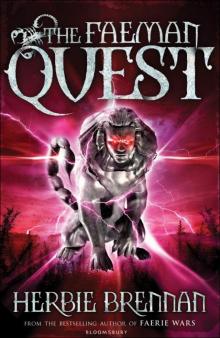 The Faeman Quest fw-5
The Faeman Quest fw-5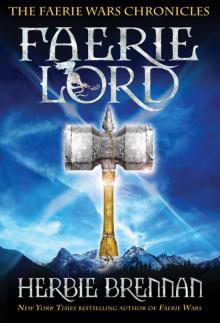 Faerie Lord
Faerie Lord Madame de Gaulle's Penis
Madame de Gaulle's Penis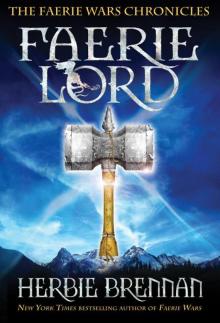 Faerie Lord fw-4
Faerie Lord fw-4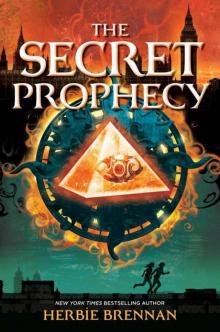 The Secret Prophecy
The Secret Prophecy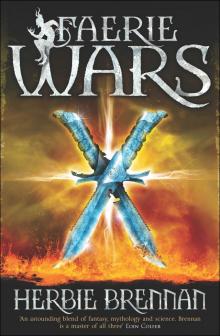 Faerie Wars
Faerie Wars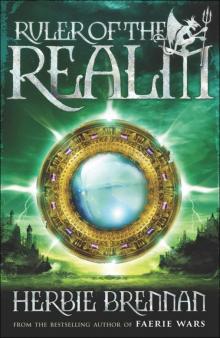 Ruler of the Realm
Ruler of the Realm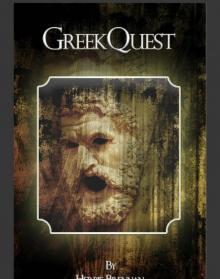 GreekQuest
GreekQuest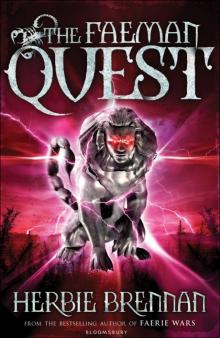 The Faeman Quest
The Faeman Quest The Purple Emperor
The Purple Emperor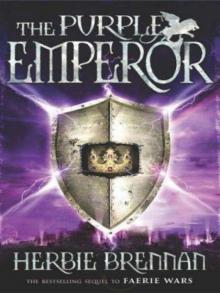 The Purple Emperor fw-2
The Purple Emperor fw-2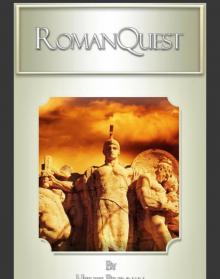 RomanQuest
RomanQuest The Doomsday Box
The Doomsday Box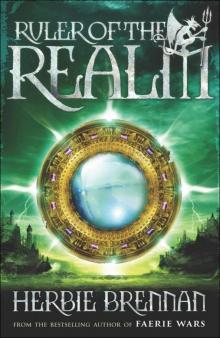 Ruler of the Realm fw-3
Ruler of the Realm fw-3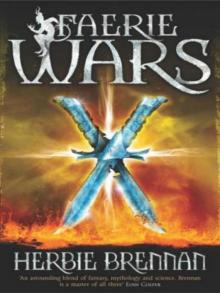 Faerie Wars fw-1
Faerie Wars fw-1